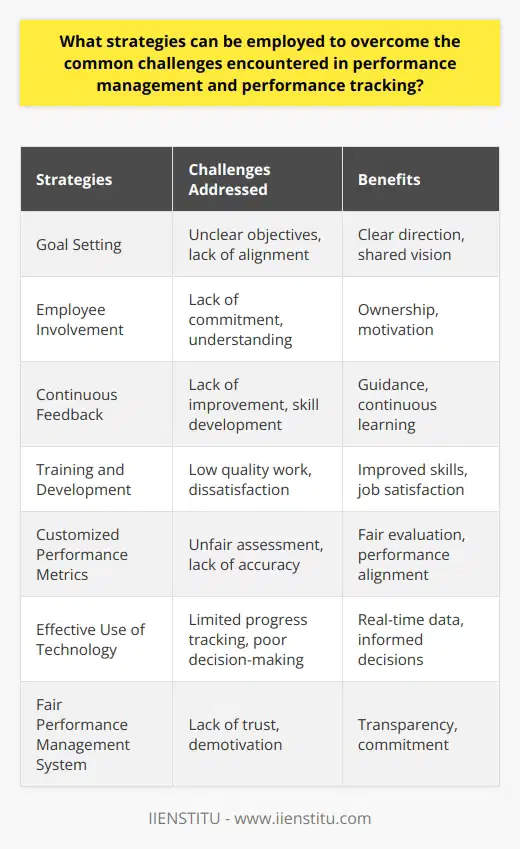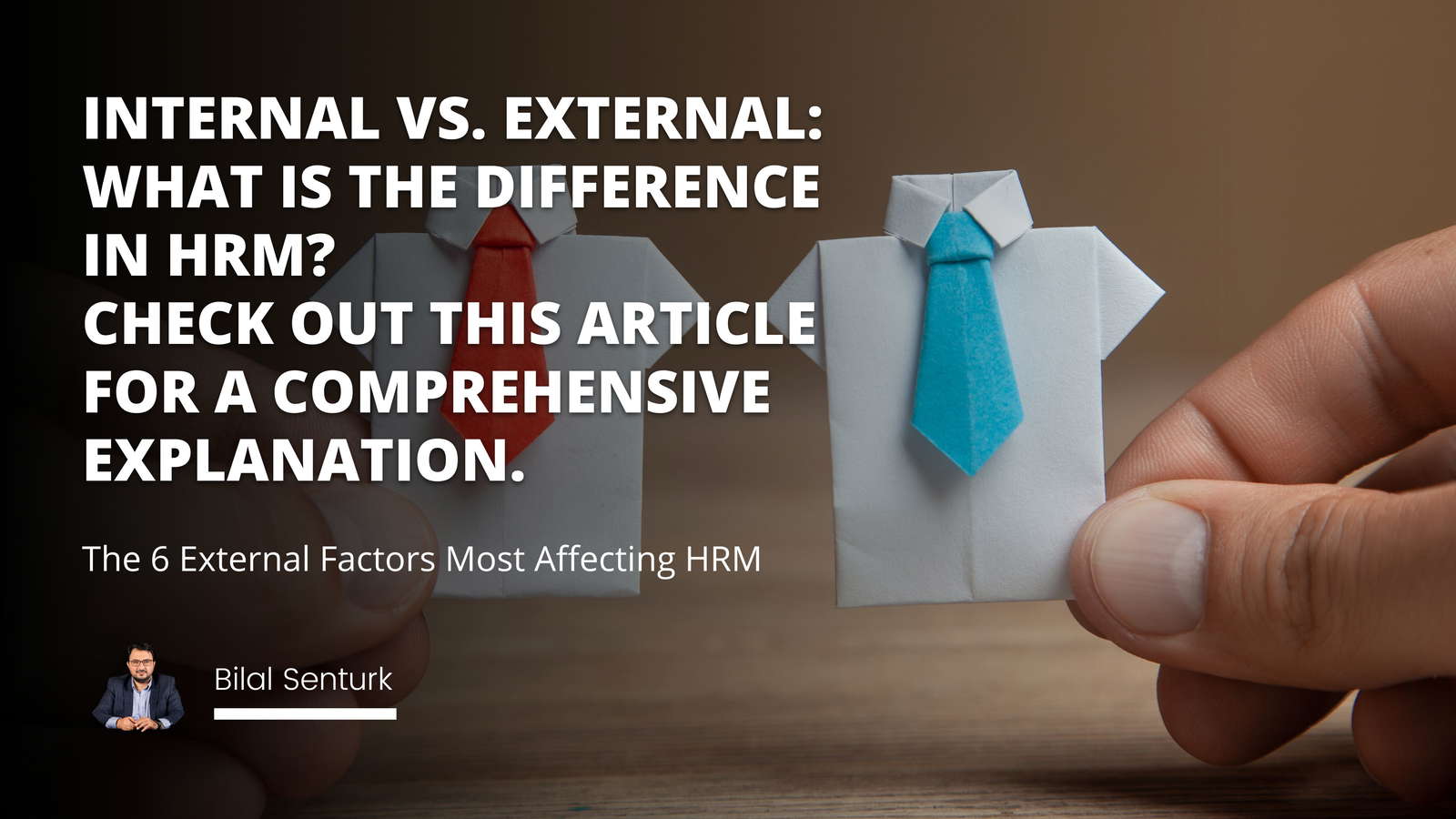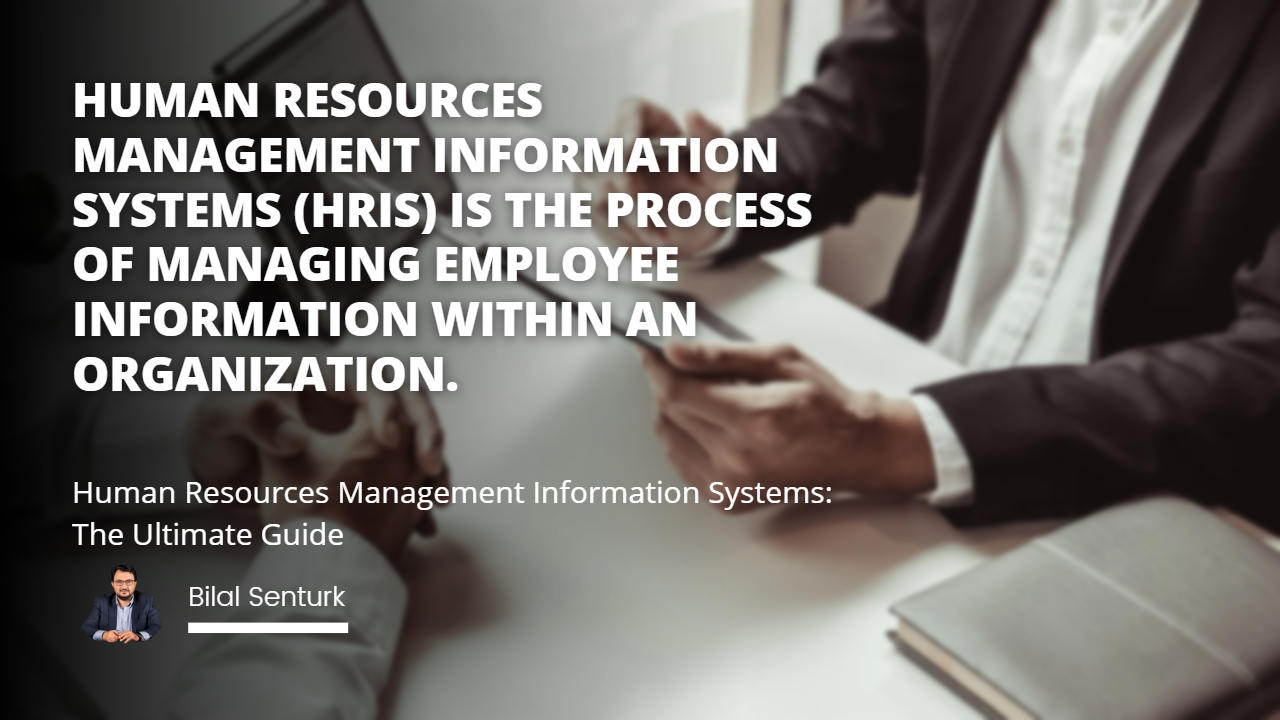Embracing Employee Performance Tracking: A Journey Toward Excellence
I still remember the day when our small startup began to expand rapidly. With growth came new challenges, and one of the most pressing was managing employee performance effectively. Back then, we didn't have a structured system in place, and it felt like we were sailing without a compass. That's when we realized the need for employee performance tracking—not just as a management strategy but as a tool to unlock our team's full potential.
The Heart of Performance Tracking
Employee performance tracking isn't just about keeping tabs on tasks completed or hours logged. It's about understanding each team member's strengths, areas for improvement, and how they contribute to the company's goals. It's akin to a gardener tending to each plant, ensuring they get the right amount of sunlight and water to flourish.
Why We Needed It
In the early days, our team was small, and communication was straightforward. As we grew, we encountered challenges:
Misaligned Objectives: Team members were working hard but not always on tasks that aligned with company goals.
Lack of Feedback: Without regular reviews, employees didn't know how they were performing or how to improve.
Recognition Shortfalls: High performers weren't always acknowledged, leading to decreased motivation.
We realized that without a performance management system, we risked losing our most valuable resource—our people.
The Multifaceted Benefits
Implementing an employee performance tracking system brought transformative benefits:
1- Clarified Expectations: Clearly defined goals helped align individual efforts with organizational objectives.
2- Enhanced Communication: Regular check-ins fostered open dialogues between managers and employees.
3- Professional Growth: Identifying skill gaps allowed us to create targeted performance improvement plans.
4- Increased Motivation: Recognizing achievements boosted morale and encouraged a culture of excellence.
5- Strategic Planning: Data-driven insights enabled better resource allocation and strategic decision-making.
One of our senior developers once shared, "Knowing what's expected of me and getting feedback has made me more confident in my role." This kind of feedback reinforced the value of our performance tracking initiatives.
Overcoming the Hurdles
Of course, the journey wasn't without its challenges. Implementing a new system can be met with resistance. Here’s how we tackled common obstacles:
Data Accuracy: We ensured that metrics were measurable and relevant. Investing in reliable tools minimized errors.
Employee Buy-In: Involving the team in the development of the tracking system increased acceptance.
Continuous Training: Regular workshops helped everyone understand how to use the system effectively.
Regular performance tracking is the key to unlocking employee potential and achieving organizational success.
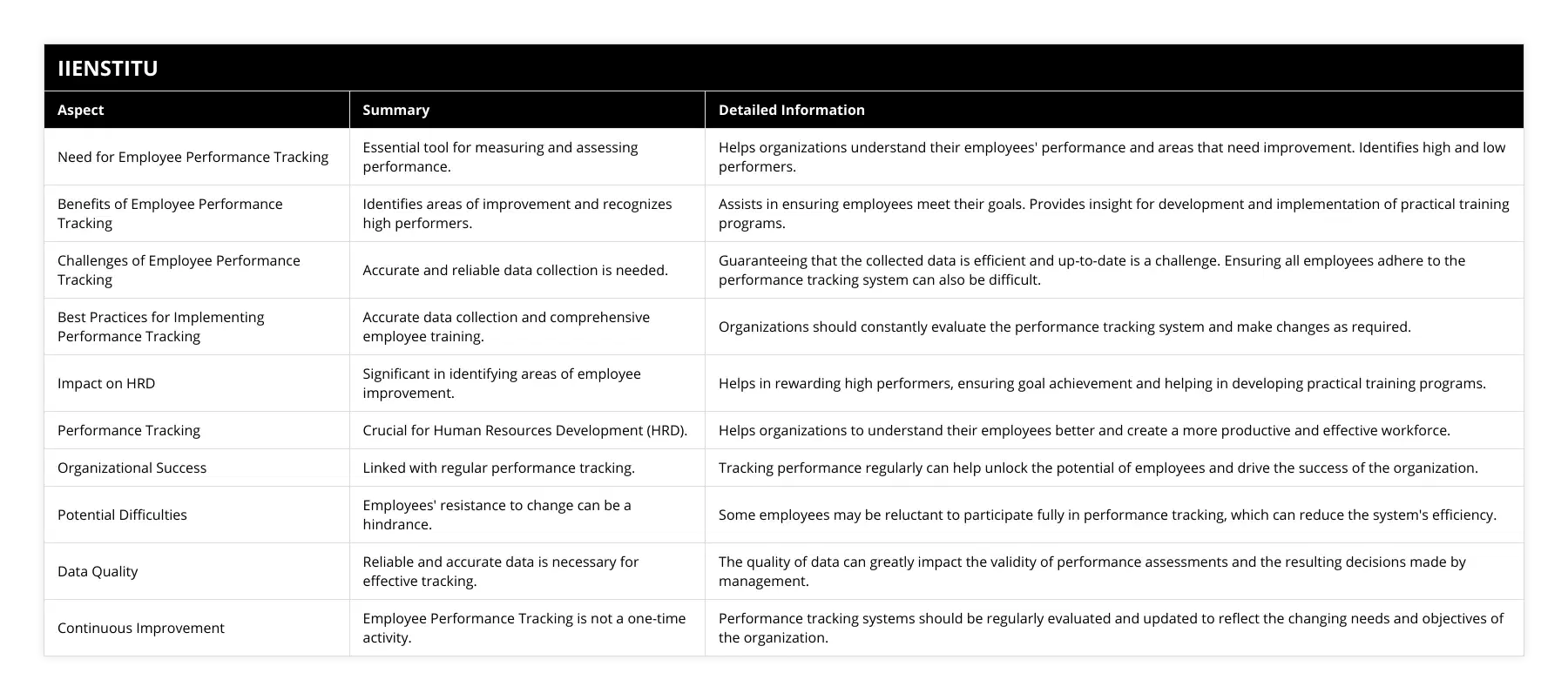
Common Challenges and Solutions
1- Resistance to Change
Solution: Communicate the benefits clearly and involve employees in the process.
2- Overcomplicating the System
Solution: Keep it simple. Focus on key performance indicators that matter most.
3- Inconsistent Application
Solution: Standardize procedures across departments to ensure fairness.
Best Practices We Embraced
To make the most of performance tracking, we adopted several best practices:
Set SMART Goals: Specific, Measurable, Achievable, Relevant, and Time-bound objectives provided clarity.
Regular Reviews: Monthly check-ins kept everyone on the same page.
Feedback Loops: Encouraged two-way feedback to promote engagement.
Leverage Technology: Used performance management software to streamline the process.
Training Programs: Developed performance management for managers to enhance leadership skills.
Implementing these practices wasn't just about ticking boxes; it was about fostering a culture where everyone felt valued and empowered to contribute their best.
The Human Resources Perspective
From a human resources management standpoint, performance tracking is indispensable. It aligns with the broader goals of human and resources management, ensuring that we're not just managing tasks but nurturing people.
Our HR team found that performance tracking helped in:
Talent Development: Identifying future leaders and providing them with growth opportunities.
Succession Planning: Preparing for future vacancies by developing internal talent.
Employee Retention: Addressing concerns proactively reduced turnover rates.
As noted in "Performance Management: Key Strategies and Practical Guidelines" by Michael Armstrong, "An effective performance management system is fundamental to managing human resources and improving organizational performance."[^1]
The Impact on Organizational Strategy
Performance tracking doesn't exist in a vacuum. It's interconnected with larger strategies like the critical path method project management strategy. By understanding each employee's role and performance, we could better map out project timelines and resource allocations.
For example, knowing the strengths of team members allowed project managers to assign tasks more efficiently, ensuring projects stayed on the critical path and were completed on time.
Personal Reflections on Performance Management
Looking back, one of the most rewarding aspects was witnessing team members achieve milestones they once thought were out of reach. I'll never forget when Sarah, a shy junior analyst, blossomed into a confident team leader. Through regular performance reviews and a tailored performance mgmt plan, she honed her skills and overcame her hesitations.
She shared with me, "The regular feedback and support made all the difference. I felt seen and valued." Stories like Sarah's highlight the profound impact that thoughtful performance management and support can have.
Practical Tips for Managers
For those embarking on this journey, here are some practical tips:
1- Start Small: Implement one aspect at a time to avoid overwhelming the team.
2- Be Consistent: Regularity builds trust and demonstrates commitment.
3- Focus on Development: Use tracking as a tool for growth, not just evaluation.
4- Celebrate Successes: Acknowledge achievements, both big and small.
5- Stay Flexible: Be willing to adjust the system based on feedback.
Beyond Tracking: Creating a Performance Culture
Ultimately, the goal is to move beyond mere tracking and foster a culture where continuous improvement is part of the organizational DNA. This involves:
Empowering Employees: Encouraging autonomy and ownership over their work.
Collaborative Goal Setting: Involving employees in setting their objectives.
Transparent Communication: Maintaining open lines of dialogue at all levels.
Learning Opportunities: Providing training and development resources.
By doing so, performance management becomes a shared responsibility, and everyone is invested in reviewing performance and striving for excellence.
The Road Ahead
As we continue to evolve, we recognize that performance tracking is not a one-time project but an ongoing process. It's about performance management for managers and employees alike, fostering an environment where feedback is welcomed, and growth is continuous.
Our journey has taught us that when we manage for performance, we're not just improving metrics—we're enhancing people's lives and contributing to a positive workplace culture.
Conclusion
Regular performance tracking is more than a management tool; it's the key to unlocking employee potential and achieving organizational success. By embracing comprehensive performance management, organizations can create an environment where everyone thrives.
[^1]: Armstrong, M. (2021). Performance Management: Key Strategies and Practical Guidelines. Kogan Page Publishers.
References
Armstrong, M. (2021). Performance Management: Key Strategies and Practical Guidelines. Kogan Page Publishers.
Cascio, W. F. (2018). Managing Human Resources. McGraw-Hill Education.
Dessler, G. (2019). Human Resource Management. Pearson.
Kaplan, R. S., & Norton, D. P. (2004). Strategy Maps: Converting Intangible Assets into Tangible Outcomes. Harvard Business Press.
Mathis, R. L., & Jackson, J. H. (2015). Human Resource Management. Cengage Learning.
Note: This text is a reflection of experiences and insights on employee performance tracking and its impact on organizational success.
Frequently Asked Questions
What are the benefits of employee performance tracking?
Employee performance tracking is a critical component of modern business practices, providing employers with tangible metrics to measure employee performance and identify areas of improvement. In addition to providing employers with valuable data, employee performance tracking has a number of benefits that can contribute to the success of an organization.
The first benefit of employee performance tracking is improved organizational efficiency. By objectively measuring the productivity and effectiveness of employees, management can identify areas where processes are inefficient or need improvement. This data can then be used to make necessary changes in order to optimize the workflow and ultimately increase organizational efficiency. Additionally, this data can be used to create more effective job descriptions and training programs for employees, further improving organizational efficiency.
Another benefit of employee performance tracking is improved employee motivation and morale. By providing tangible evidence that their efforts are being recognized and rewarded, employees are more likely to remain engaged in their work and motivated to perform at their best. Additionally, by having access to concrete metrics that demonstrate their accomplishments and progress over time, employees have greater insight into how they are performing relative to their peers which can lead them to strive for higher levels of achievement.
Finally, using employee performance tracking data allows employers to better assess potential candidates for positions within the organization when making hiring decisions. By having access to objective metrics such as past productivity or customer service ratings, managers are able make more informed decisions on who would be the most suitable candidate for a particular role which in turn increases the chances that they will hire an individual who is best suited for the position in question.
In conclusion, there are numerous benefits associated with utilizing employee performance tracking within an organization including increased organizational efficiency, improved employee motivation and morale as well as better hiring decisions . As such it is highly recommended that organizations incorporate this practice into their business strategies as it can significantly contribute towards achieving long-term success.
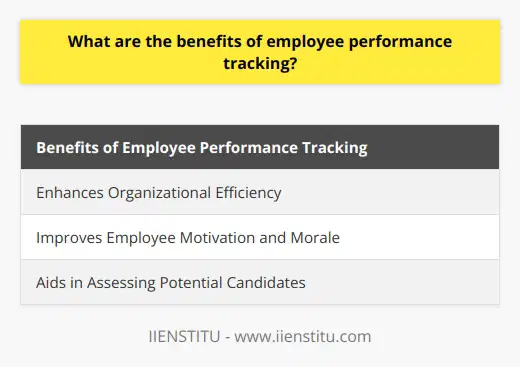
What challenges can arise when implementing employee performance tracking?
When implementing a system for tracking employee performance, organizations may face a number of potential challenges. It is important for managers to be aware of these issues and to plan carefully when implementing a system.
One of the most significant challenges that may arise when implementing employee performance tracking is that of ensuring that the system is fair and equitable. A system that is perceived as being biased or unfair will not be effective in motivating employees. To ensure that the system is fair, it is important to ensure that the criteria used to evaluate performance are clearly defined and that employees are given the opportunity to provide feedback.
Another potential challenge is that of data accuracy. It is important to ensure that the data used for tracking performance is of high quality. This means that it must be accurate and up-to-date. Poor quality data can lead to an inaccurate picture of employee performance and can lead to inaccurate decisions being made about rewards or disciplinary action.
Finally, there is the challenge of maintaining employee engagement with the performance tracking system. It is important to ensure that employees understand the purpose of the system and how it will benefit them. To achieve this, it is necessary to provide regular communication and feedback. This can help to ensure that employees remain motivated and engaged with the system.
In conclusion, when implementing a system for tracking employee performance, organizations face a number of potential challenges. These include ensuring the system is fair and equitable, maintaining data accuracy, and maintaining employee engagement. It is important for managers to be aware of these issues and to plan carefully when implementing a system.

What are the best practices for implementing employee performance tracking?
Employee performance tracking is an essential component of any successful organization. It helps ensure that employees are meeting their goals and provides key performance metrics to assess their progress. To ensure the success of employee performance tracking, a number of best practices must be implemented.
First and foremost, it is important to have a clear understanding of what is being tracked. This should include objective measures such as output, productivity, quality control, customer satisfaction, or attendance as well as subjective measures such as initiative or attitude. Once these metrics have been identified, it is necessary to develop a system for tracking them efficiently and accurately. Depending on the size of the organization and the type of data being collected, this may involve manual processes or automated software solutions.
Another key element in effective employee performance tracking is setting realistic expectations for individual employees’ goals and achievements. The goals should be achievable yet challenging enough to motivate employees to reach their highest potential. As well, feedback should be provided regularly so that employees can track their progress over time and receive recognition when they meet specific targets or milestones. This will help foster a culture of accountability within the organization while giving employees a sense of ownership over their own successes or failures.
Finally, it is important to keep open communication between managers and staff regarding employee performance tracking initiatives. Regular meetings should be held in order to discuss any changes that need to be made in order for the system to remain effective and relevant over time. In addition, managers should provide ongoing support and resources that help ensure employees understand how they are being evaluated as well as how they can improve on areas where needed most effectively..
By following these best practices for implementing employee performance tracking systems organizations can not only gain valuable insights into individual productivity levels but also cultivate an environment where each person’s contributions are appreciated and valued appropriately.
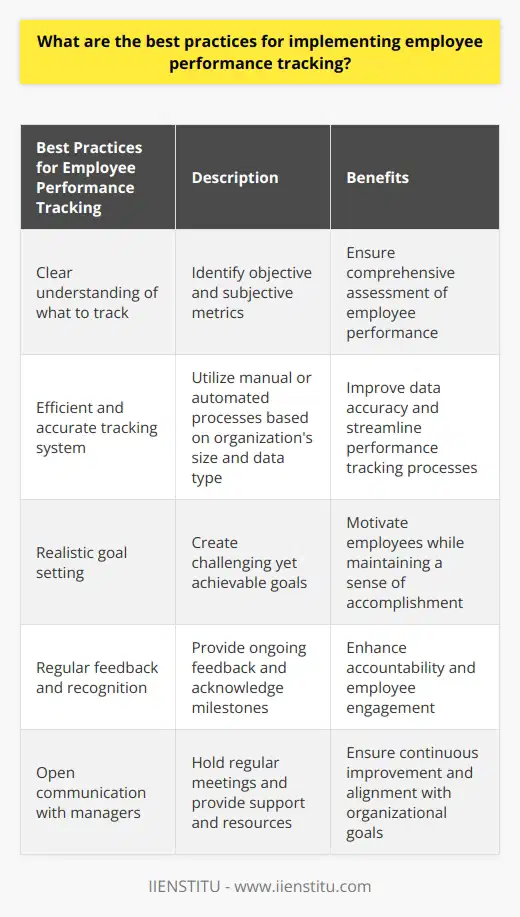
What are some key factors to consider when designing an effective performance management system?
Defining Clear Objectives
The first critical element in the design of an effective performance management system is setting clear, measurable, and achievable objectives. These objectives serve as a roadmap for employees, outlining what the organization expects from them. Moreover, they help in aligning individual goals with the broader organizational vision.
Initiating Regular Feedback
Within a strong performance management system, it is imperative to include regular feedback mechanisms. Constructive feedback helps employees understand their strengths and areas for improvement. Additionally, an open line of communication fosters a sense of trust, encouraging employees to voice their opinions and concerns.
Utilizing Performance Metrics
The employment of relevant performance indicators is another primary consideration. These metrics should reflect the specific skills, knowledge, and competencies that an employee needs for their job. Realistic performance metrics are key to assessing the actual working efficiency of employees.
Promoting Career Development
Career development opportunities should be part of any well-designed performance management system. Employee advancement enhances motivation and job satisfaction, which are pivotal factors for retaining high-performing staff. Career development activities also provide an incentive for employees to improve their skill set and efficiency.
Continuous Improvement
Lastly, effective performance management systems should embrace a culture of continuous improvement. This involves frequently reviewing and refining the system to ensure it is fit for purpose and aligns with evolving organizational goals. To keep the system up-to-date and effective, management should also consider technological advancements and industry best practices.
In conclusion, clear objectives, regular feedback, relevant performance metrics, career development opportunities, and continuous improvement are all important considerations in designing an effective performance management system. Implementing these considerations can result in increased employee performance, motivation, job satisfaction, and ultimately, enhanced organizational results.
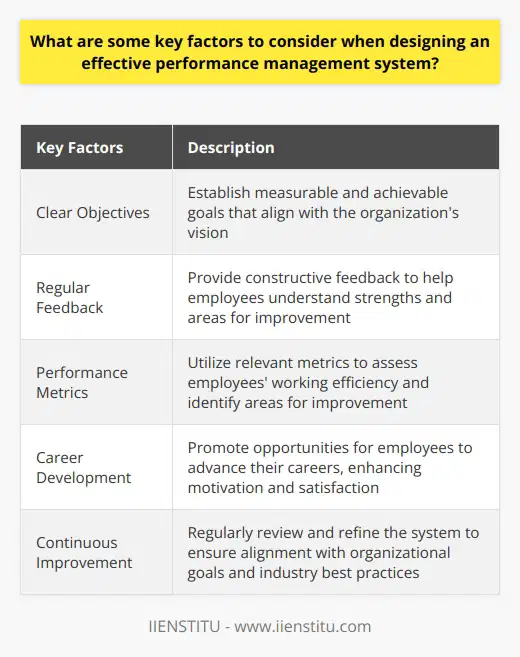
How can organizations ensure that their performance management system fosters employee engagement and motivation?
Effective Communication
Organizations can promote employee engagement and motivation through an effective performance management system by putting effective communication at the forefront. Clear communication matters as it ensures that employees understand what management expects regarding work performance and goals.
Management Involvement
Management involvement also plays a critical role. By consistently demonstrating commitment to the performance management process, management sets an example for employees. Active participation from management makes them accountable and promotes employee engagement.
Continuous Feedback
Incorporating continuous feedback within the performance management system also enhances employee motivation. Regular constructive feedback aids employees in understanding their strengths and identifying areas for improvement. This not only promotes professional growth but also situational awareness, leading to enhanced job satisfaction.
Training Opportunities
Providing training opportunities linked to the performance management system can also underscore employee motivation. By offering training and professional development opportunities, organizations show employees their value and commitment to their growth. Such strategies foster motivation as employees feel they belong and contribution towards the organization's success.
Reward and Recognition
Implementing a reward and recognition programme as part of the performance management system is also crucial. Recognizing good performance fosters employee motivation and prompts employees to be more engaged. Thus, a balance between performance assessments, feedback, professional development, and rewards can ensure a performance management system that engages and motivates employees.
Fairness and Transparency
Lastly, fairness and transparency in the performance management system are vital. Employees should feel that the assessment process is just and transparent, encouraging a sense of fairness, which boosts engagement and motivation. Therefore, organizations need to continually ensure that their performance management system is equitable and transparent to optimally benefit employees.
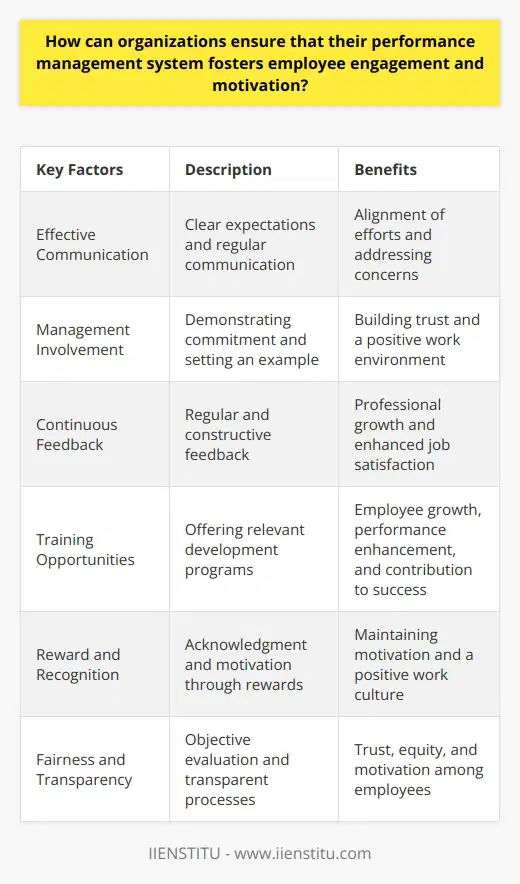
What strategies can be employed to overcome the common challenges encountered in performance management and performance tracking?
Performance Monitoring Tactics
Employing the right strategies can solve the common challenges encountered in performance management and tracking. Start with goal setting. Establish clear, realistic, and measurable objectives. The targets must align with the organization's strategic plan. This harmony ensures that everyone understands and commits to the shared vision.
Involve Employees in Goal-Setting
Engage staff in setting personal performance goals. It encourages commitment. If employees get the chance to contribute, they understand the end goal better. They take ownership and strive to achieve the targets.
Performance Feedback Mechanism
Institute a continuous feedback process. Do not limit feedback to annual performance reviews. Regular interaction provides a platform for recognition. It guides employees on areas that need improvements. Constructive feedback is critical for continuous skills development.
Employee Development Programs
Infuse performance management with training and development. The two elements ought to work hand-in-hand. Helping employees enhance their skills benefits both parties. It results in better quality work and boosts employee satisfaction.
Performance Metrics that Matter
Adapt metrics that suit the job description. Standard measurements won't work across all departments. Customize them to the roles and tasks undertaken by each unit. Evidence-based metrics provide a fair basis for performance assessment.
Effective Use of Technology
Technology plays a pivotal role in tracking and managing performance. Use project management software. It facilitates real-time tracking of progress against targets. It captures valuable data you can use to make informed decisions.
Commitment to a Fair Process
Lastly, ensure fairness in your performance management system. Employees need assurance that the system is not biased. Fair process encourages dedication to achieving the set goals.
In conclusion, overcoming performance management and tracking challenges requires a well-rounded approach. Involve employees, give regular feedback, and use technology appropriately. Monitor performance using relevant metrics and foster fairness. With these strategies, companies can enhance performance management effectiveness, improve employee satisfaction, and achieve their desired objectives.
